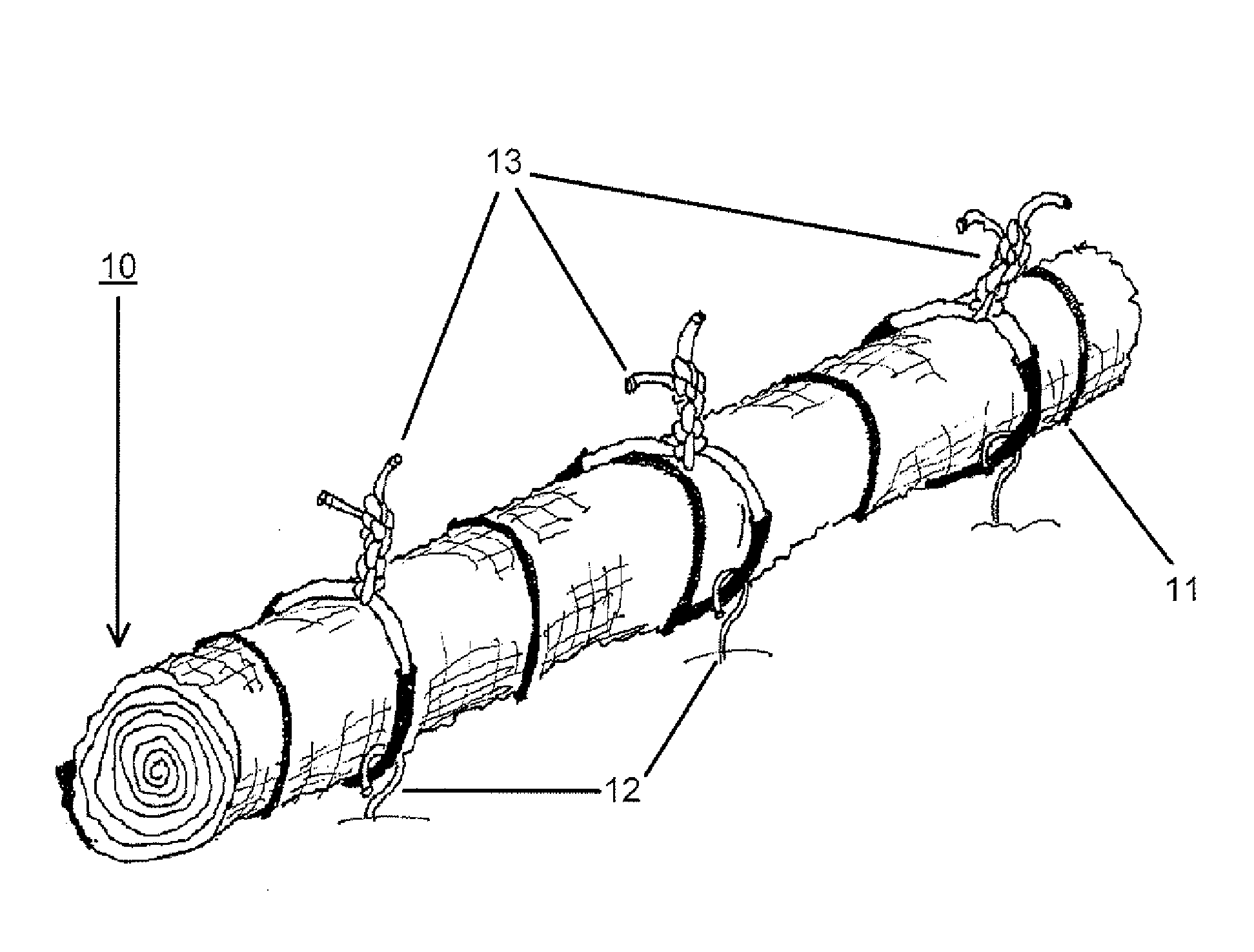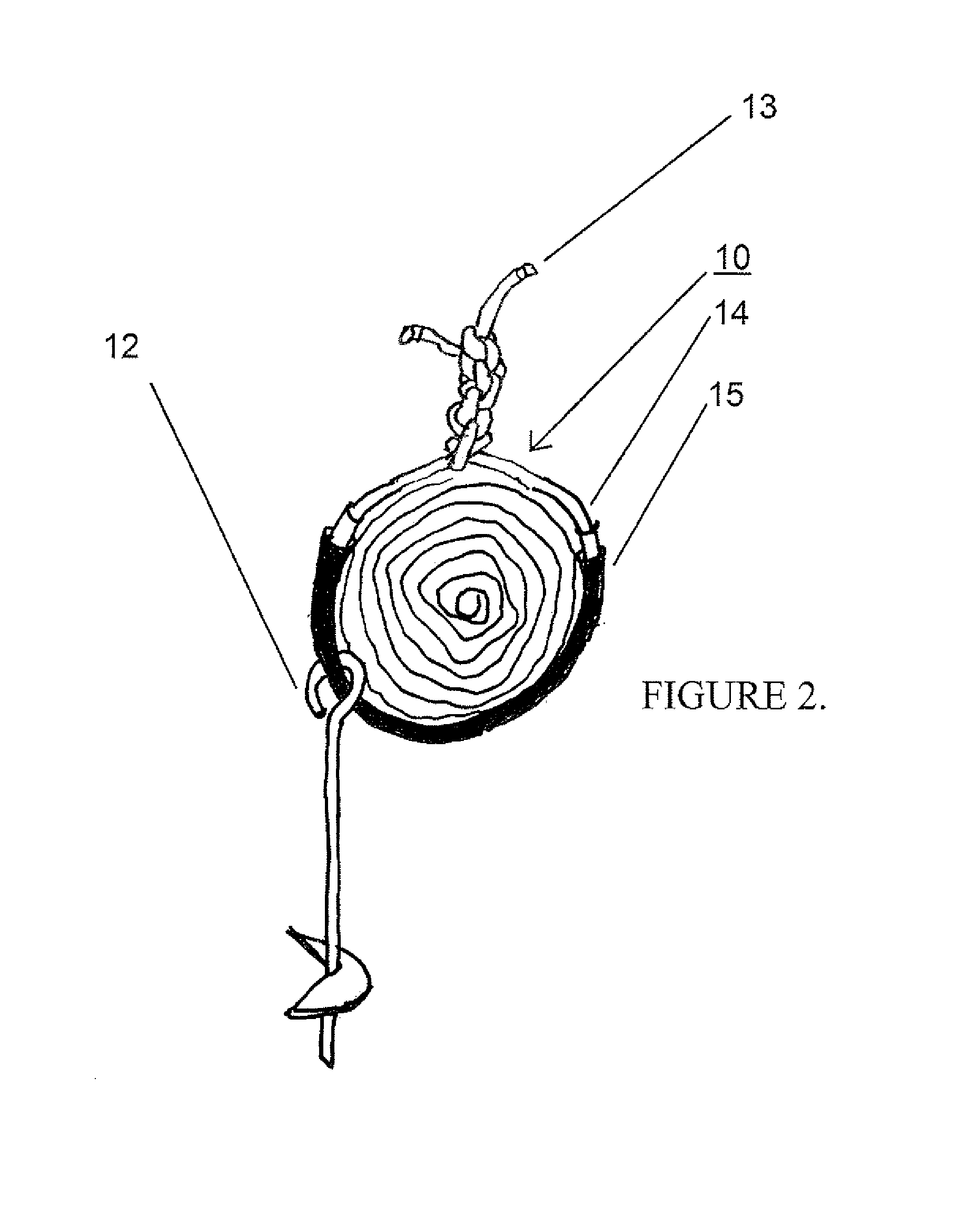Wave Energy Reduction System
a technology of wave energy and reduction system, which is applied in the direction of groynes, construction, marine site engineering, etc., can solve the problems of plant death, mechanical damage to plant leaves, and difficulty in reestablishing such grasses,
- Summary
- Abstract
- Description
- Claims
- Application Information
AI Technical Summary
Benefits of technology
Problems solved by technology
Method used
Image
Examples
Embodiment Construction
[0029]The present invention is directed to a wave energy reduction method and apparatus for creating moderately quiescent water in which transplanted emergent salt marsh wetlands grasses can endure and eventually establish.
[0030]The preferred embodiment of the invention is described as follows:
[0031]To create the wave energy reduction roll 10, assemble 27 linear feet (8.2 m) of the geotextile fabric into a cylinder form, or roll, that is 12-14 inches (30-36 cm) in diameter. The rolls are tied together with black cable ties 11 to maintain the cylindrical shape of the roll. Tie the roll together with 48-inch (1.22 m) long and ¼-inch (6.35 mm) wide black cable ties. The black cable ties will have ultraviolet light inhibitors and a 175 psi (1.21 MPa) tensile stress rating. Locate the two end-of-the-roll cable ties 12 inches (30.5 cm) from each end of the roll. Evenly space the remaining cable ties 2 feet (61 cm) apart along the roll. Cable ties will be pulled tightly against the geotext...
PUM
 Login to View More
Login to View More Abstract
Description
Claims
Application Information
 Login to View More
Login to View More - R&D
- Intellectual Property
- Life Sciences
- Materials
- Tech Scout
- Unparalleled Data Quality
- Higher Quality Content
- 60% Fewer Hallucinations
Browse by: Latest US Patents, China's latest patents, Technical Efficacy Thesaurus, Application Domain, Technology Topic, Popular Technical Reports.
© 2025 PatSnap. All rights reserved.Legal|Privacy policy|Modern Slavery Act Transparency Statement|Sitemap|About US| Contact US: help@patsnap.com



